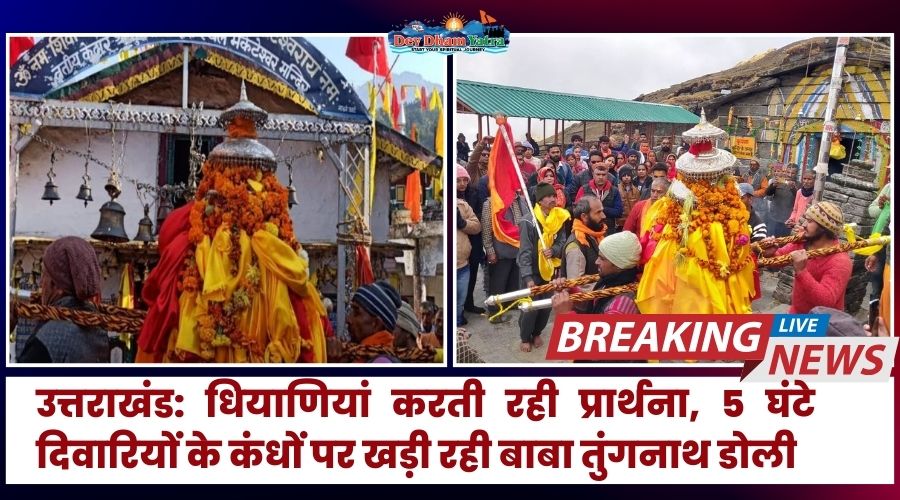About Tirap
Tirap district is located in Arunachal Pradesh, India. It is situated in the eastern part of the state and shares its borders with the neighboring country of Myanmar. The district headquarters is in the town of Khonsa.
Tirap district is characterized by hilly terrain, with the Patkai Hills forming part of its landscape. A subtropical climate characterizes the area, with hot summers and moderate winters. The district receives significant rainfall during the monsoon season.
The district is home to various tribal communities, including the Nocte, Tangsa, Wancho, and Tutsa tribes. The local languages spoken in Tirap include Nocte, Tangsa, and Wancho. Agriculture is the primary occupation of the people, with rice being the staple crop.
The tribal communities in Tirap have a rich cultural heritage. They have their own distinct customs, traditions, and festivals. Some of the major festivals celebrated in Tirap include Pongtu, Oriah, and Chalo Loku.
Tirap district is known for its scenic beauty, lush green landscapes, and picturesque valleys. The region offers opportunities for nature lovers and adventure enthusiasts. Some popular tourist attractions in Tirap include the Khonsa Museum, Deomali Peak (the highest peak in Arunachal Pradesh), and Namdapha National Park (located nearby).
It is worth mentioning that Tirap district has faced security challenges due to the presence of insurgent groups in the region. However, efforts have been made by the government to improve the security situation and promote development in the area.
Tirap district is gradually developing its infrastructure, including road connectivity and communication networks. The district is connected to other parts of Arunachal Pradesh and neighboring states through roadways. The nearest airport is the Dibrugarh Airport in Assam, which is approximately 200 kilometers away.
Tirap district offers visitors a glimpse into the rich cultural heritage of the local tribes and the natural beauty of the region. However, it is advisable to check the current situation and seek local guidance before planning a visit, considering any security concerns or travel advisories that may be in place.
About Kedarnath
Kedarnath is a widely venerated Hindu pilgrimage place, located in Uttarakhand. It is located at an altitude of roughly 3,583 meters (11,755 feet) above sea level, nestled in the Garhwal Himalayan range.
The Kedarnath Temple, dedicated to Lord Shiva, is one of the twelve Jyotirlingas (sacred abodes of Lord Shiva) and holds immense religious significance for Hindus. The temple is believed to have been constructed in the 8th century and has a distinct architectural style.
To reach Kedarnath, pilgrims need to undertake a trek of approximately 16 kilometers from Gaurikund, the base camp. The trek takes you through scenic landscapes, forests, and mountainous terrain. Alternatively, helicopter services are available from Phata or Guptkashi for those who prefer a faster mode of transportation.
Kedarnath is one of the four shrines of the Char Dham Yatra, along with Badrinath, Gangotri, and Yamunotri. Many devotees undertake this pilgrimage to seek blessings and spiritual fulfillment. The yatra usually takes place from April/May to October/November, depending on weather conditions.
Kedarnath offers various accommodation options for pilgrims, including guesthouses, dharamshalas (pilgrims’ rest houses), and tented camps. Due to the remote location and high altitude, the facilities may be basic. It is advisable to book accommodations in advance, especially during peak pilgrimage seasons.
There is stunning natural splendor all around Kedarnath. The majestic peaks of the Himalayas, including Kedarnath Peak, create a stunning backdrop for the temple. The Mandakini River flows nearby, adding to the serene ambiance of the area.
Kedarnath experiences cold weather throughout the year. Summers (April to June) are mild, with temperatures ranging from 15 to 30 degrees Celsius (59 to 86 degrees Fahrenheit). Monsoons (July to September) bring heavy rainfall, and the region is prone to landslides during this time. Winters (October to March) are extremely cold, with temperatures dropping below freezing point.
According to Hindu mythology, Kedarnath is believed to be the place where Lord Shiva went into hiding to evade the Pandavas after the Mahabharata war. He assumed the form of a bull and later reappeared as a jyotirlinga. The temple holds immense spiritual significance for devotees of Lord Shiva.
When planning a visit to Kedarnath, it is essential to be well-prepared, physically fit, and mindful of the challenging terrain and high altitude. It is advisable to check weather conditions, make necessary travel arrangements in advance, and adhere to safety guidelines provided by local authorities or tour operators.
Tirap to Kedarnath Distance
There are many ways to get to Kedarnath from Tirap. The distance from Tirap to Kedarnath by road is roughly 2592 kilometers. The distance from Tirap to Kedarnath by air is roughly 1720 kilometers.
Tirap to Kedarnath by Train
Tirap to Kedarnath distance cannot be traveled through a straight route.
- To reach to Kedarnath from Tirap, it is recommended to take a bus or cab from Tirap to Itanagar. Then, travel via a train from Itanagar to New Delhi. From New Delhi, take a bus or a taxi to Dehradun. From Dehradun, take another bus or a taxi to get to Kedarnath.
- Tirap- Itanagar (via bus or cab)- New Delhi (via train)- Dehradun (via bus or cab)- Kedarnath (via cab or bus)
Tirap to Kedarnath Distance by Flight
Mohanbari Airport is the airport that is closest to Tirap. Jolly Grant Airport in Dehradun is the airport that is closest to Kedarnath. The suggested path from Tirap to Kedarnath is as follows:
- From Tirap, travel via a bus or a taxi to Itanagar. Then, take a flight to New Delhi from Itanagar. From New Delhi, take a bus or cab to reach Dehradun. From Dehradun, travel via a bus or cab to reach Gaurikund, Kedarnath.
- Tirap- Itanagar (via bus or cab)- New Delhi (via flight)- Dehradun (via bus)- Gaurikund, Kedarnath.
Travel Tips:
- Consider the weather and the ideal time of year to visit Kedarnath. Depending on the weather, the temple is open from April/May through October/November. Avoid the possibility of landslides and a lot of rain during the monsoon season.
- Due to Kedarnath’s high altitude, acclimatization before starting the journey is essential. To adjust to the altitude, spend a day or two in a nearby town like Rudraprayag or Guptkashi.
- The journey to Kedarnath may be physically challenging for people who aren’t used to climbing at high altitudes. To prepare, make a commitment to routine fitness activities and workouts. Before setting out on the adventure, it is advised to consult a healthcare provider, especially if you have any underlying medical issues.
- To get to Kedarnath, there are primarily two ways: on foot or via helicopter. Be prepared for a 16-kilometer (10-mile) excursion from Gaurikund if you decide to walk there. A knapsack containing first aid supplies, water, snacks, a jacket, and other necessities is required. Other requirements include suitable trekking equipment, sturdy footwear, and loose-fitting clothing.
- Only a few lodges and guesthouses close to the shrine are among the locations to stay in Kedarnath. It is essential to make your hotel reservations in advance, particularly during the busiest season of the year for pilgrimages. Another option is to stay the night in a nearby town, like Guptkashi or Rudraprayag, and then go to Kedarnath the next day.
- For your own safety, make sure to stay hydrated by drinking plenty of water the entire trip. To avoid altitude sickness, pace yourself and take frequent breaks. For additional security and support throughout the trek, consider hiring a local guide or affiliating with a trekking organization.
FAQs:
Q. How far are Tirap and Kedarnath apart?
A: The driving distance from Tirap and Kedarnath is roughly 2592 km, and the air travel is 1720 km.
Q. When traveling from Tirap to Kedarnath, how long does it take?
A: Depending on the mode of transportation used, it can take longer or shorter to get from Tirap to Kedarnath. Given traffic and road conditions, it can take 24 to 30 hours to travel by road.
Q. What modes of transportation are available from Tirap to Kedarnath?
A: Road travel is the favored mode of transportation between Tirap and Kedarnath. You can take a taxi or take a bus or other kind of public transit. You may need to take numerous modes of transportation or make transfers since there are no direct flights, trains, or buses that connect the two locations.
Q. When is the best time of year to visit Kedarnath?
A: The best times to visit Kedarnath are from May to June during the summer and from September to October after that.
It is simpler to make the journey during these months and to take in the area’s picturesque beauty because of the excellent weather and clear skies. However, given the area gets significant amounts of rain and snowfall during the monsoon and winter seasons, it’s crucial to check the weather and plan your trip accordingly.
Q. Are there lodging possibilities in Kedarnath?
A: Yes, Kedarnath offers a variety of lodging options. Hotels, lodges, and guesthouses come at a range of price points. However, it is suggested to reserve your stay in advance due to the location’s religious significance and the lack of available lodging.

















